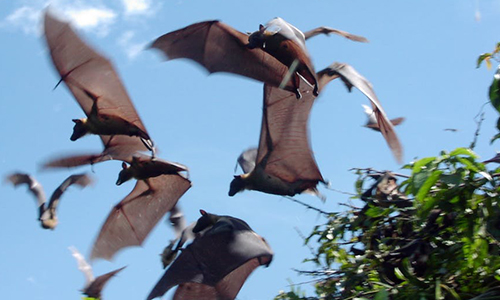Can Bats Predict the Next Ebola Outbreak?
May 25, 2018
Source: Ddu
 830
830

Ebola is considered a highly infectious and dangerous disease, which was harbored by fruit bats. In 1976, the first outbreak was recorded in West Africa. During 2014-2016, this outbreak got spread to other parts of the world leading to numerous deaths. This led to researchers trying to discover clues as to how to predict the next Ebola outbreak.
A new study was conducted by Paolo Bocchini, associate professor of civil and environmental engineering, Javier Buceta, an associate professor of bioengineering, and postdoctoral researcher Graziano Fiorillo. They were affiliated with the Lehigh University in Bethlehem, PA. They hypothesized that, since fruit bats carry the Ebola virus, tracking down their migratory patterns might give information about the time and location of the next outbreak.
Buceta and his team used satellite information and parameter sampling and fed this information into a computer algorithm for prediction. The data fed into the algorithm included the bats' birth rates, death rates, infection rates and recovery rates. For predicting bat infections in a particular region, the model included information about when and where the bats migrated, seasonal changes, and food and shelter availability.
Paolo Bocchini stated that "We needed to study the random fluctuations of available resources over the entire African continent at high resolution; it was a massive computational and probabilistic challenge."
The scientists hope that this model will predict and prevent not only Ebola outbreaks, but also other dangerous viruses that are transmitted from animals to humans.
By DduRead more on
- Things to Know before Buying Newborn Baby Incubators March 31, 2022
- Ebola ‘no longer incurable’ August 15, 2019
- Highly Resistant Food Poisoning Bug Responds to Antibiotics September 6, 2018
- Smartphone Based Diagnosis to Identify Mosquitoes Transmitting Infection September 5, 2018
- 3 Natural Plant Extracts Manufacturers on Drugdu.com September 4, 2018
your submission has already been received.
OK
Subscribe
Please enter a valid Email address!
Submit
The most relevant industry news & insight will be sent to you every two weeks.



